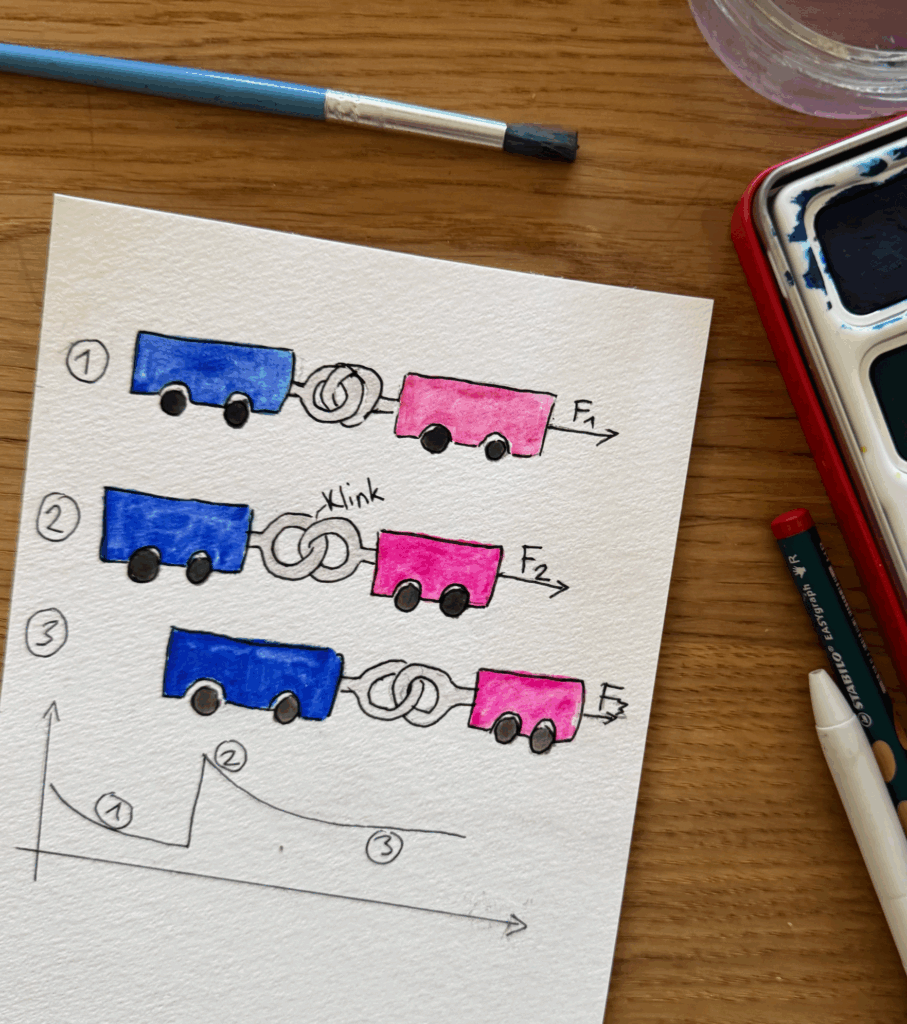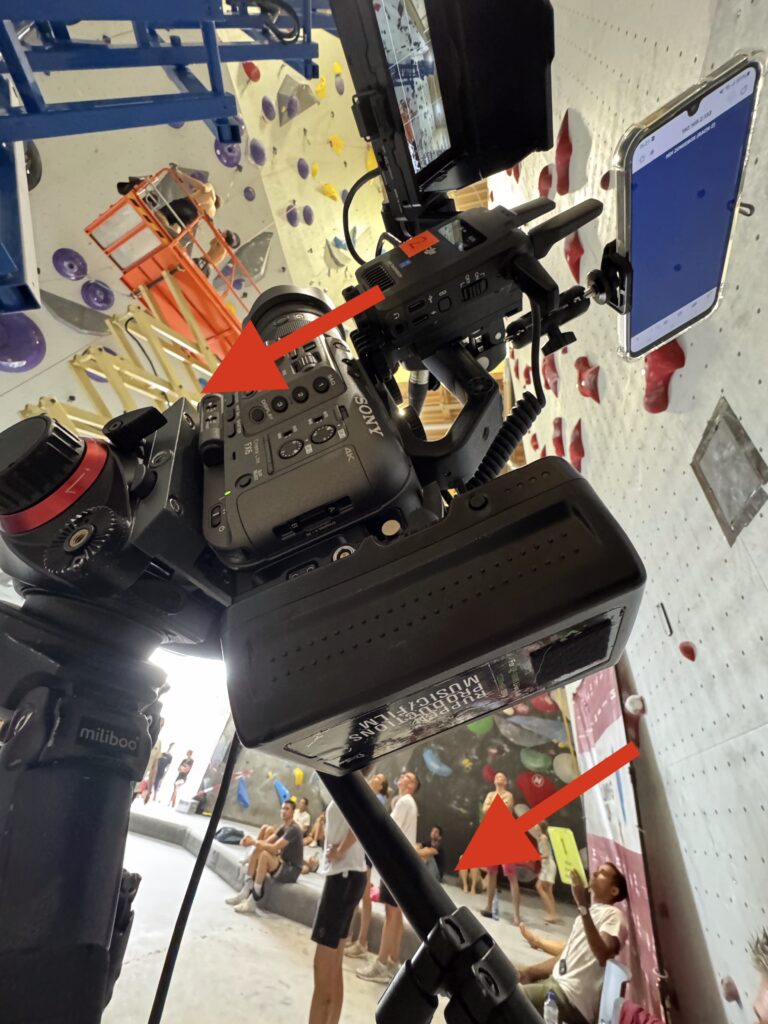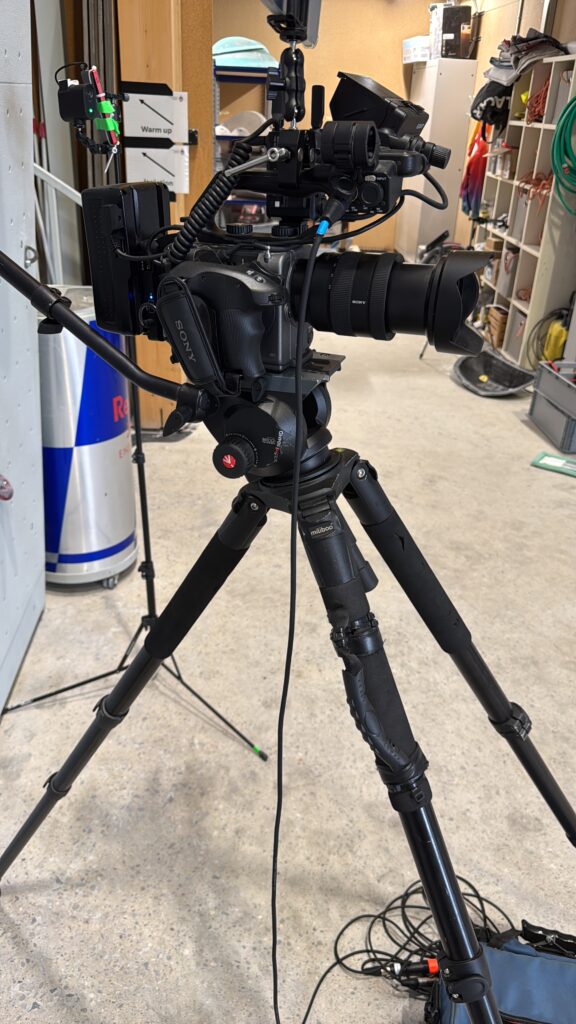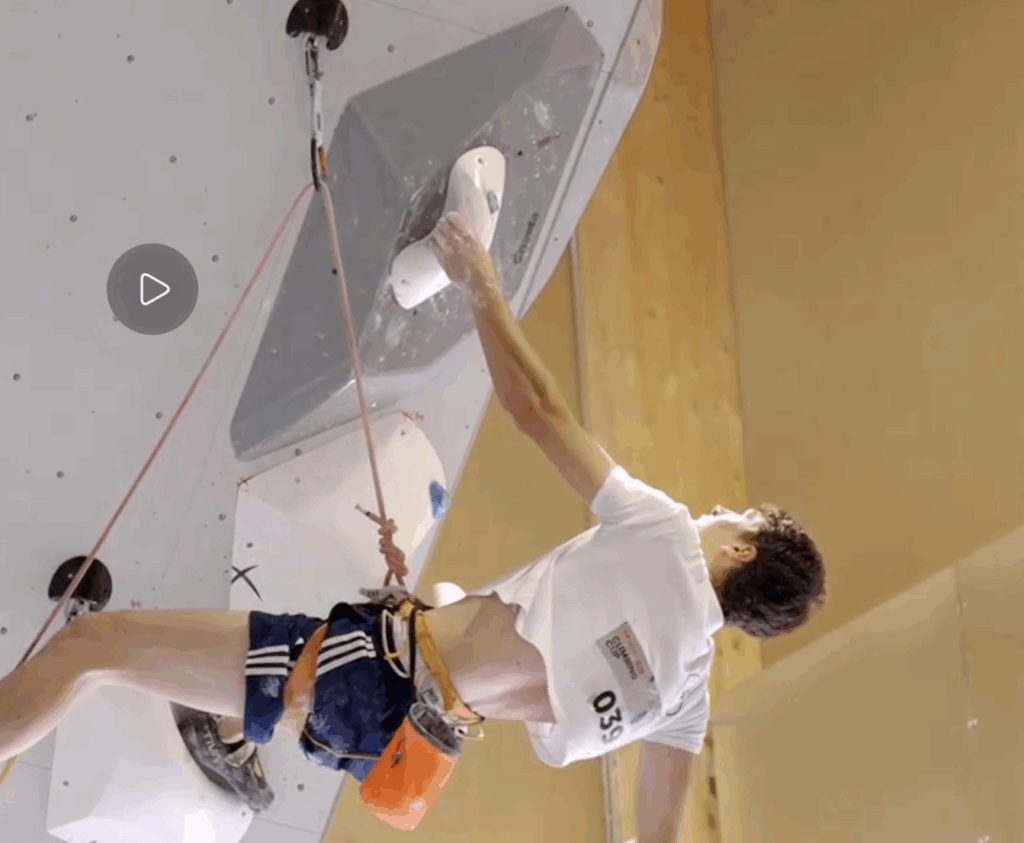Tracking Sports Actions the right way

Last weekend I had the pleasure to film a climbing competition for Ruppen Productions and Swiss Climbing TV. This meant a lot of tracking shot (Following the subject along a movement path by rotating the camera on a tripod). Here are my tricks for tracking sports actions the right way:
Tolerances
When mounting (rigging) a camera, there will always be non-permanent connection points. You attach a tripod plate to the camera with a screw. You then attach that plate to the tripod head with another screwing mechanism. A third screw connects the tripod head to the tripod. 6-9 connectors hold the legs of the tripod in positions.
All those connection points have tolerances, meaning they don’t fit perfectly together but have a bit of empty space between them (Illustration).

When filming, those tolerances lead to choppy, jerky footage. My solution to this: I apply force on both sides of the tripod. This preloads the tripod head with force and eliminates some of that starting jitter.

Plan out the full movement set
Before I track action with my camera, I like to play out the motion beforehand, do a practice dry-run. This can show you your limitation in speed and range of motion. In the case of yesterday, the tripod head was only able to tilt upwards a certain amount until hitting a metal plate.
The solution was a very funky way of levelling the whole tripod head by tilting it backwards. This extends the vertical range for the tilt by about 50%, but made any horizontal camera moves impossible because of the angle. Those tradeoffs are the reason why every shooting situation requires some level of creativity. For a situation like climbing, where the only movement is vertical, it was a perfect hack.

Safety zones
Just as in real life, in filmmaking it’s considered bad practice to hack off limbs. Unless it’s a real closeup, the border of the image shouldn’t cut through the extremities of the athletes. Using a safety zone (empty space) around the athlete and framing the shot a bit wider gives you more reaction time towards sudden movements.

